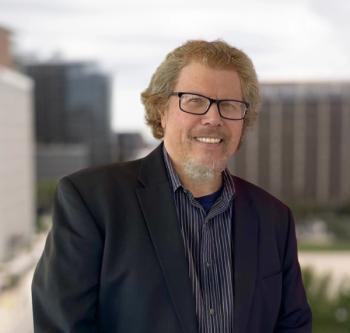
The Youth Mental Health Crisis: Supporting Patients With ASD and ADHD
How can we help this unique patient population thrive? Experts weigh in at the 2022 APA Annual Meeting.
CONFERENCE REPORTER
“One-third of kids in middle school and high school in North America are struggling socially—one-third,” Elizabeth Laugeson, PsyD, told attendees of the 2022 American Psychiatric Association Annual Meeting. “Do you think they’re all getting services? Probably not. And if you think about the consequences of this, it’s pretty disturbing.”
Laugeson is the founder and director of the University of California, Los Angeles (UCLA) PEERS Clinic; training director of the Tarjan Center for Developmental Disabilities and Health Sciences; and clinical assistant professor of psychiatry and biobehavioral sciences at the Semel Institute for Neuroscience and Human Behavior, David Geffen School of Medicine, at UCLA. She is also the author of The Science of Making Friends: Helping Socially Challenged Teens and Young Adults.
The estimated 1 in 54 US children diagnosed with autism spectrum disorder (ASD) may especially experience social difficulties, according to Thomas E. Brown, PhD, of the Brown Clinic for ADHD and Related Disorders and the University of California-Riverside School of Medicine. Brown added that about 50% to 75% of individuals on the autism spectrum also have attention-deficit/hyperactivity disorder (ADHD).
Youth with ASD who exhibit symptoms of ADHD tend to have more difficulty with adaptive behaviors at home, in school, and in their community, and may fall behind in a wide variety of executive functions, including activation, focus, effort, emotion, memory, and action. They also experience several social challenges, including poor social communication, poor social awareness, poor social cognition, less constructive social engagement, and few close meaningful (reciprocal) friendships, according to Laugeson. Youth may experience any or all of these challenges even if they do not meet full DSM criteria for an ADHD diagnosis.
Teaching targeted social skills can help youth with ASD and ADHD, Laugeson added, noting the impact of common issues such as rejection and bullying on mental health, self-esteem, academic performance, and beyond even in youth who are not neurodivergent. “What we know is that peer rejection is one of the strongest predictors of mental health problems,” she said, noting a connection between rejection and depression, anxiety, loneliness, substance abuse, early withdrawal from school, and suicidal ideation and attempts.
Laugeson explained that evidence-based programs teaching targeted social skills, such as the PEERS Clinic at UCLA, can help youth with ASD and ADHD improve in common challenge areas such as social communication, awareness, engagement, and cognition. At PEERS, they work with preschoolers, adolescents, and young adults by teaching them targeted strategies for building friendship and relationship skills, managing conflict, and handling rejection through training, teleconferences, virtual boot camps, and role-play videos and exercises.
They also help all age groups deal with both direct (verbal, physical) and indirect (cyberbullying, gossip) forms of bullying. “The reality is that every kid gets teased. Even adults get teased. What matters is how you react to it,” Laugeson said, noting that the most common advice youth receive for handling bullies is often ineffective.
“What are most young people told to do in response to teasing? Ignore it, walk away, tell an adult. But these are not ecologically valid strategies—and yet, this is what adults tell kids to do... It’s an epidemic of bad advice.”
PEERS shows youth the effects of these strategies in comparison to more effective techniques through role-play exercises and videos.
Based on the research, the PEERS approach works. Laugeson shared a recent study on outcomes of PEERS treatment in individuals with ASD, ADHD, and with both ASD and ADHD. All groups demonstrated significant improvements in social skills (ASD: t[58]=6.07, p<.001; ADHD: t[43]=3.45, p=.001; ASD and ADHD: t[42]=3.83, p<.001) and decreases in features of autism (ASD: t[59]=5.97, p<.001; ADHD: t[43]=3.45, p=.001; ASD and ADHD: t[31]=6.47, p<.001).
“Even though the groups started differently at baseline,” she said, “they all improved after this treatment at the same rate.”
Overall, teaching targeted social skills can be helpful to youth who have ASD, ADHD, or both ASD and ADHD, as well as those who are not neurodivergent. “What if conversational skills—and more broadly, social skills—were not an art, but a science? Our research in social skills training for teens and young adults with social difficulties is based on this premise,” Laugeson wrote in The Science of Making Friends.
“We believe that social skills can be taught, much in the way we might teach math or science. By breaking down complex, seemingly sophisticated social skills into concrete rules and steps of social behavior, we can demystify and to some extent decode the ‘art form’ that is social skills.”
Newsletter
Receive trusted psychiatric news, expert analysis, and clinical insights — subscribe today to support your practice and your patients.

















